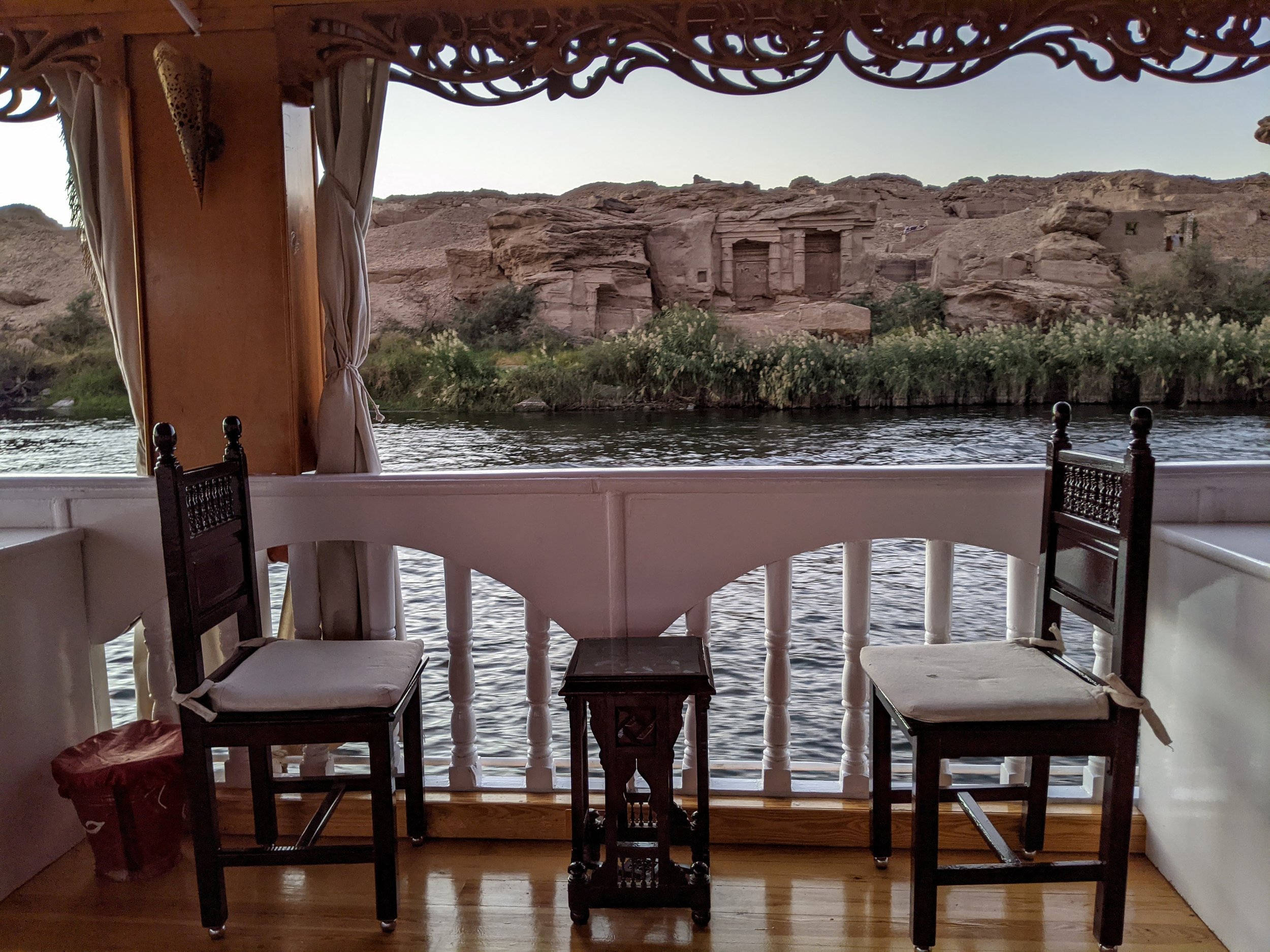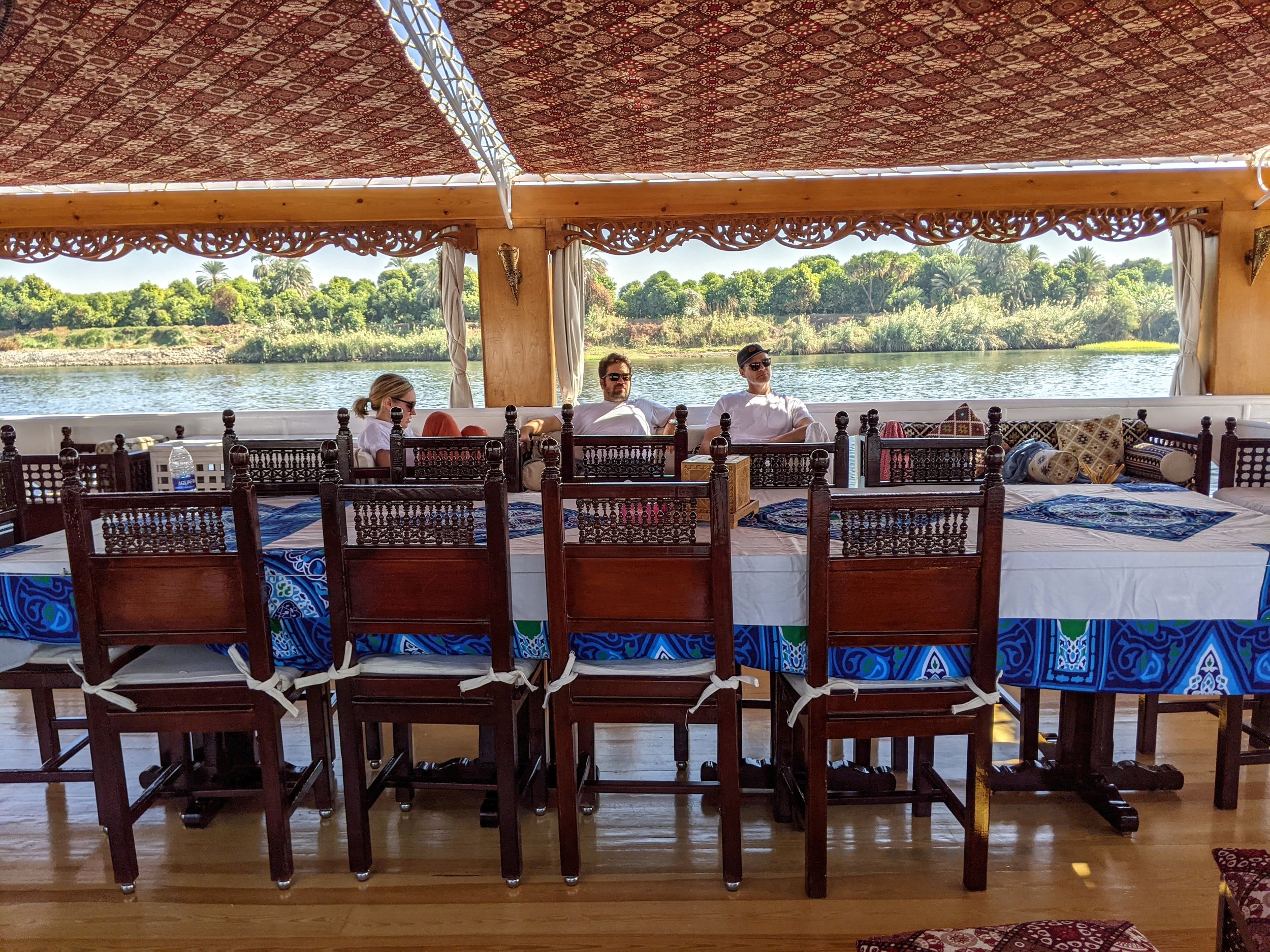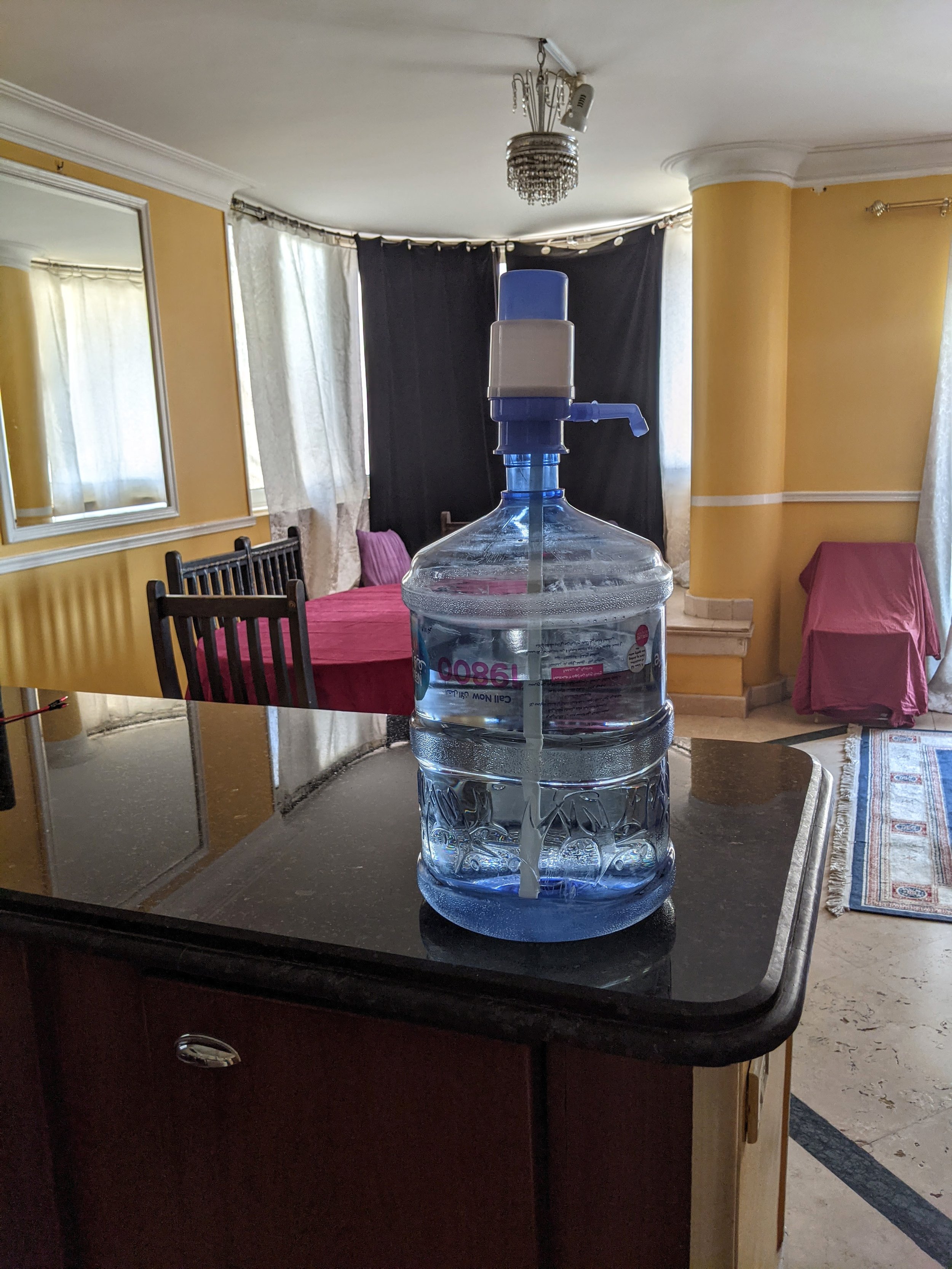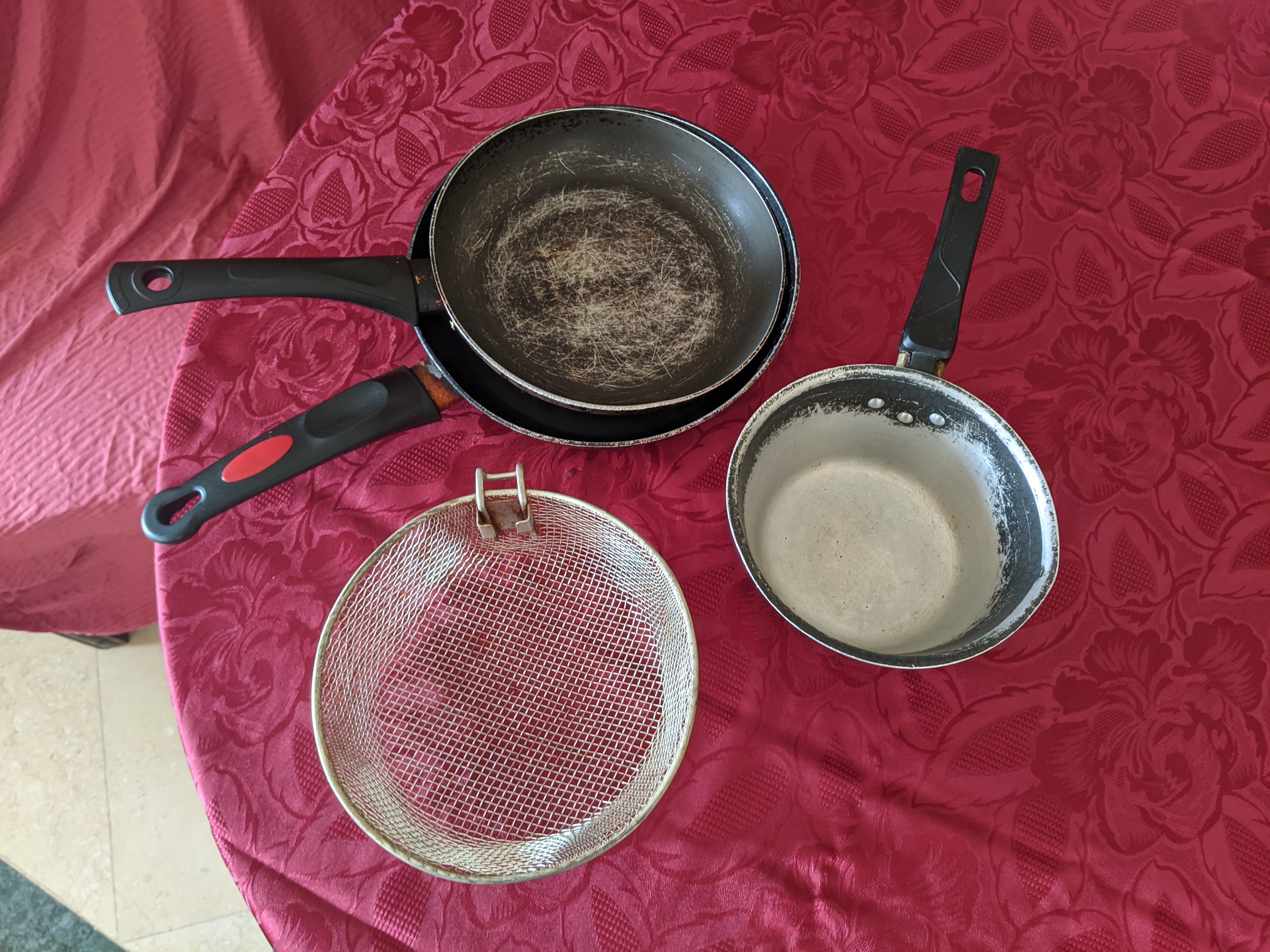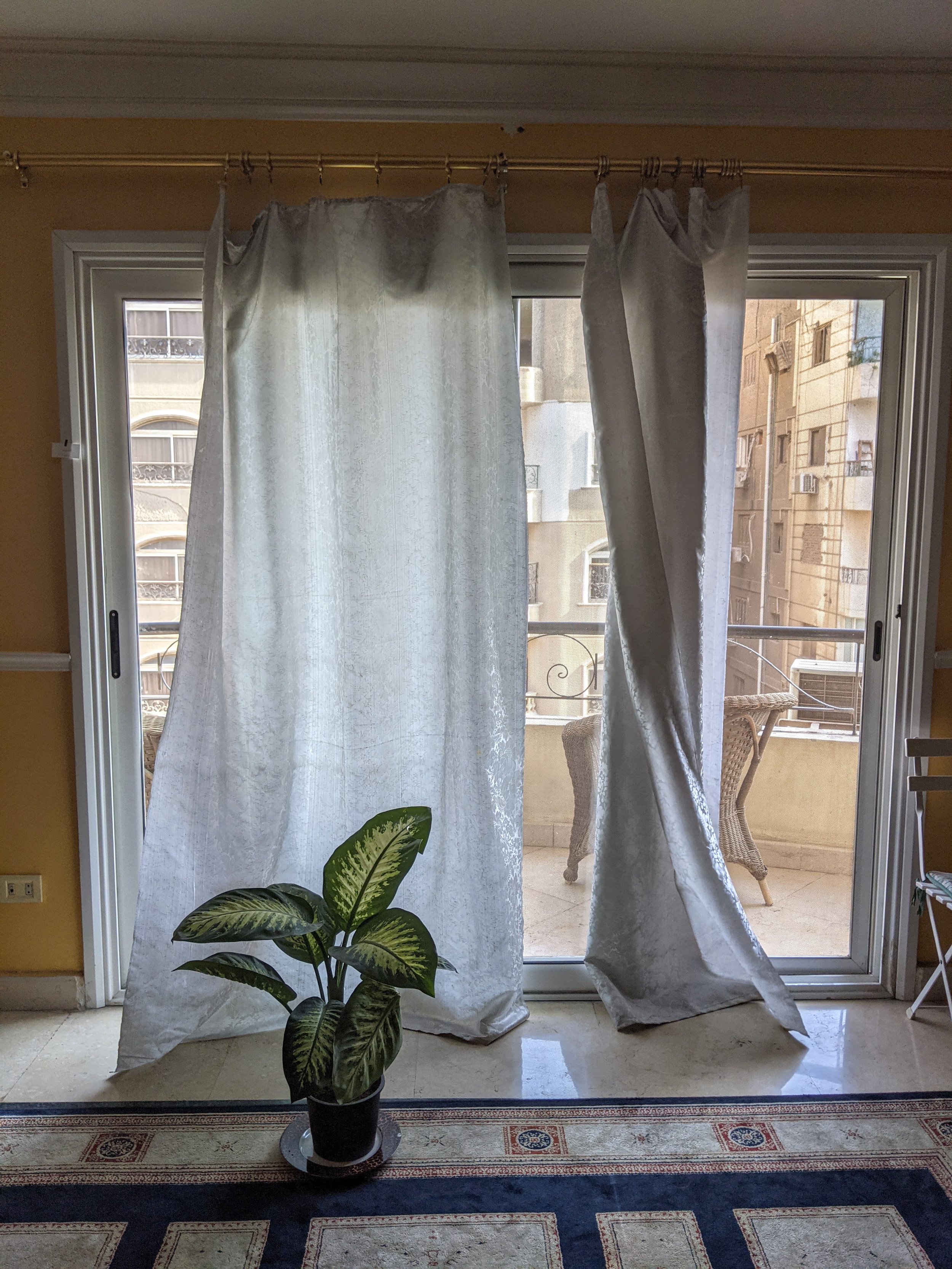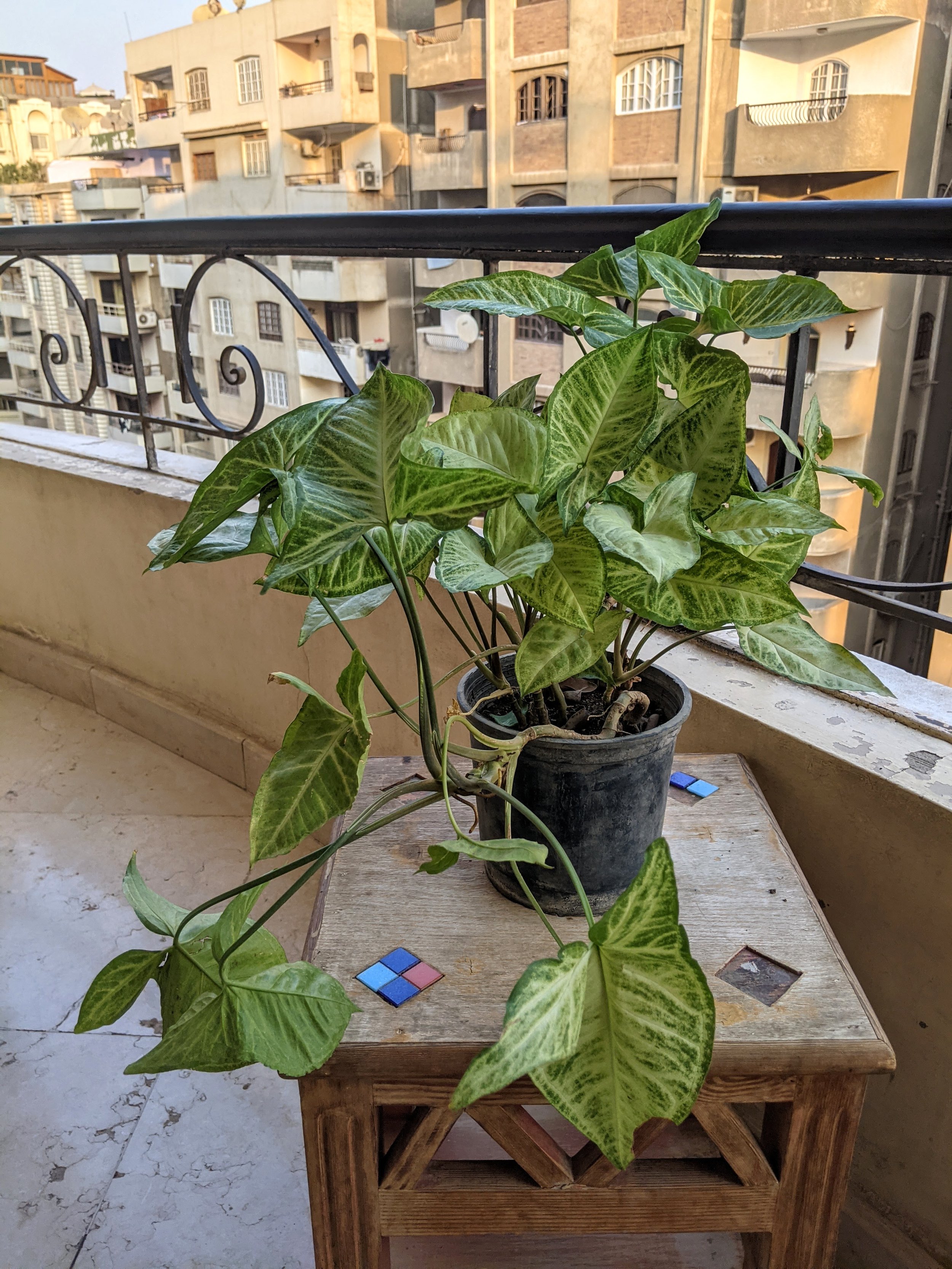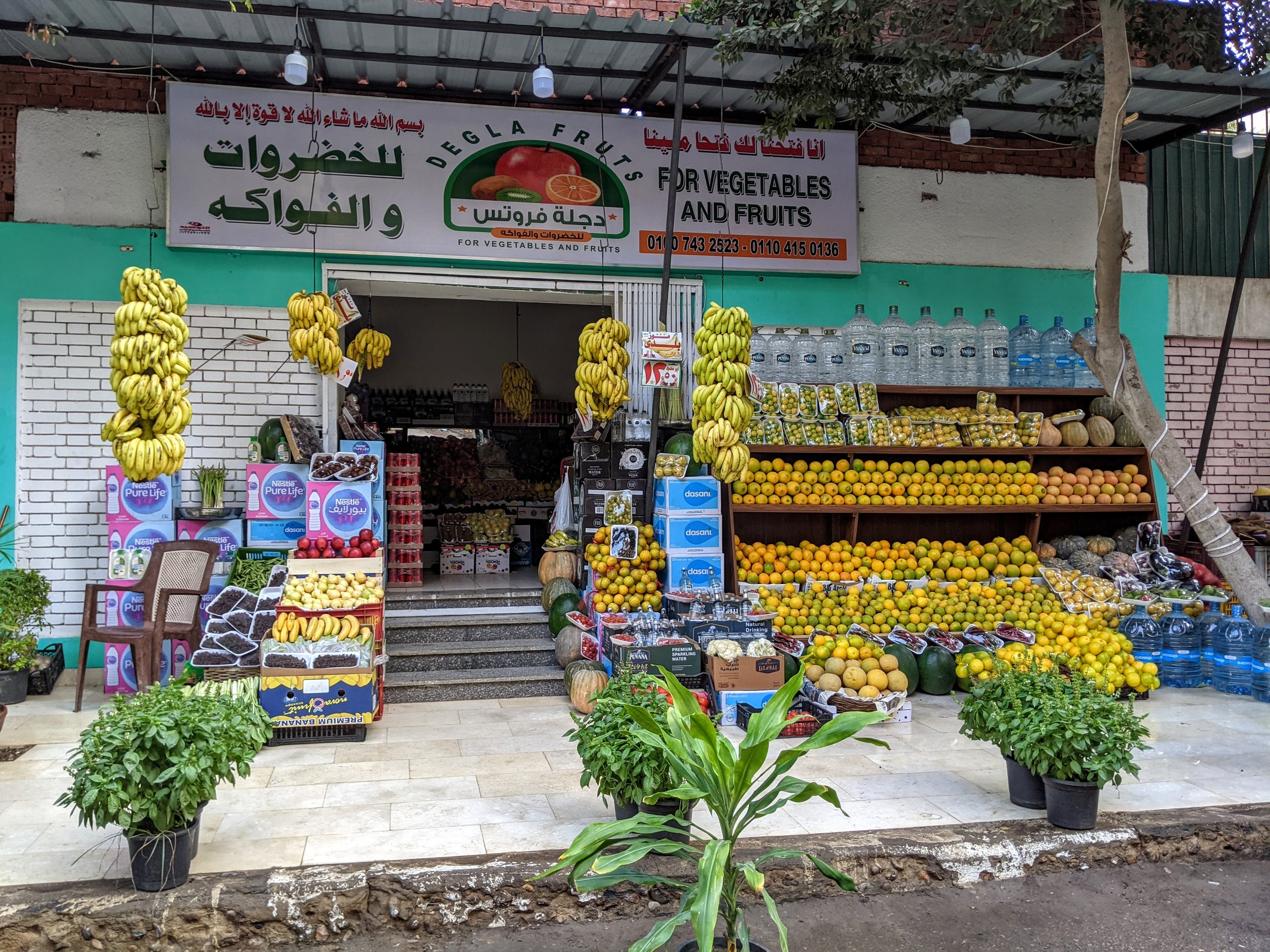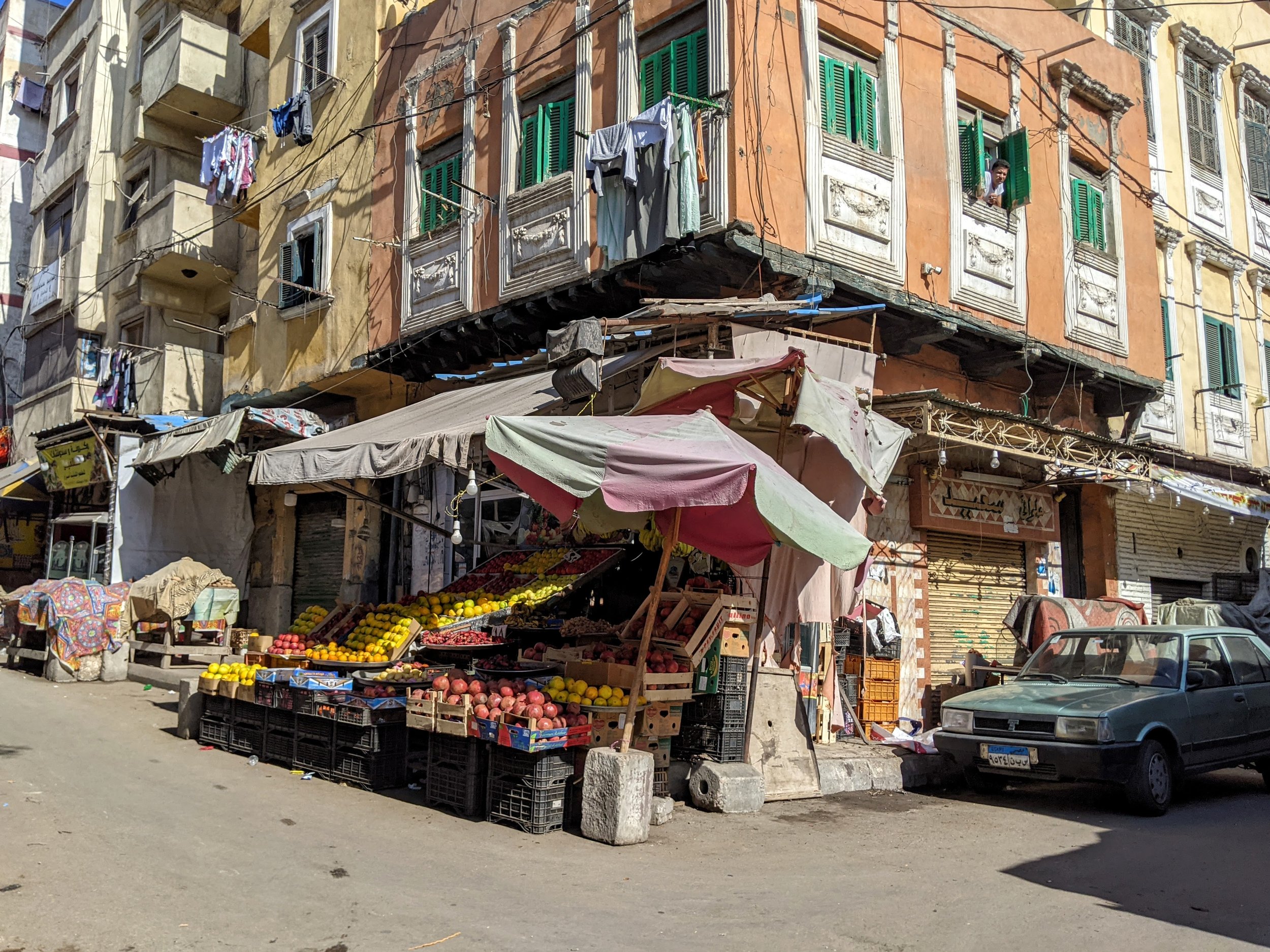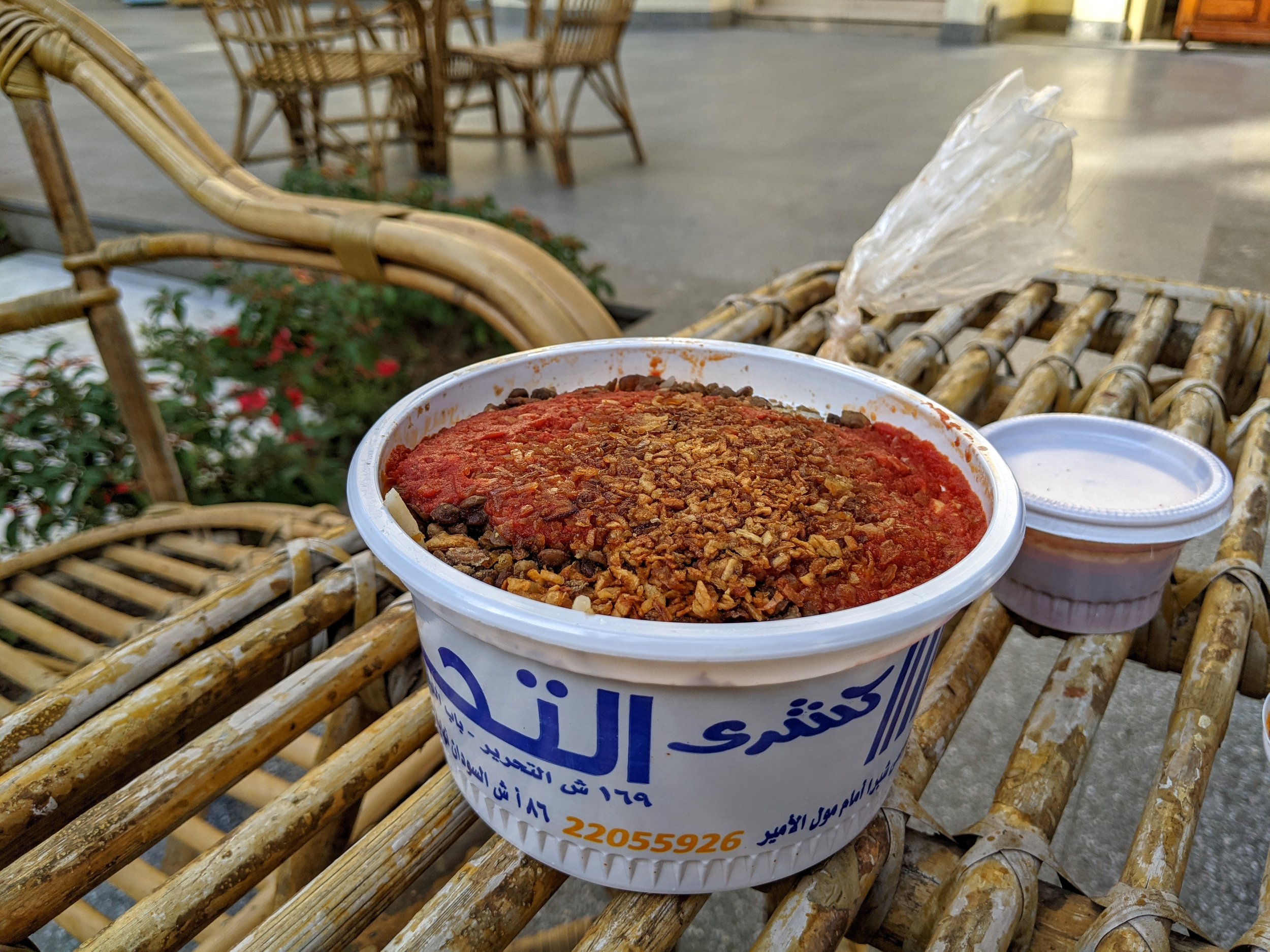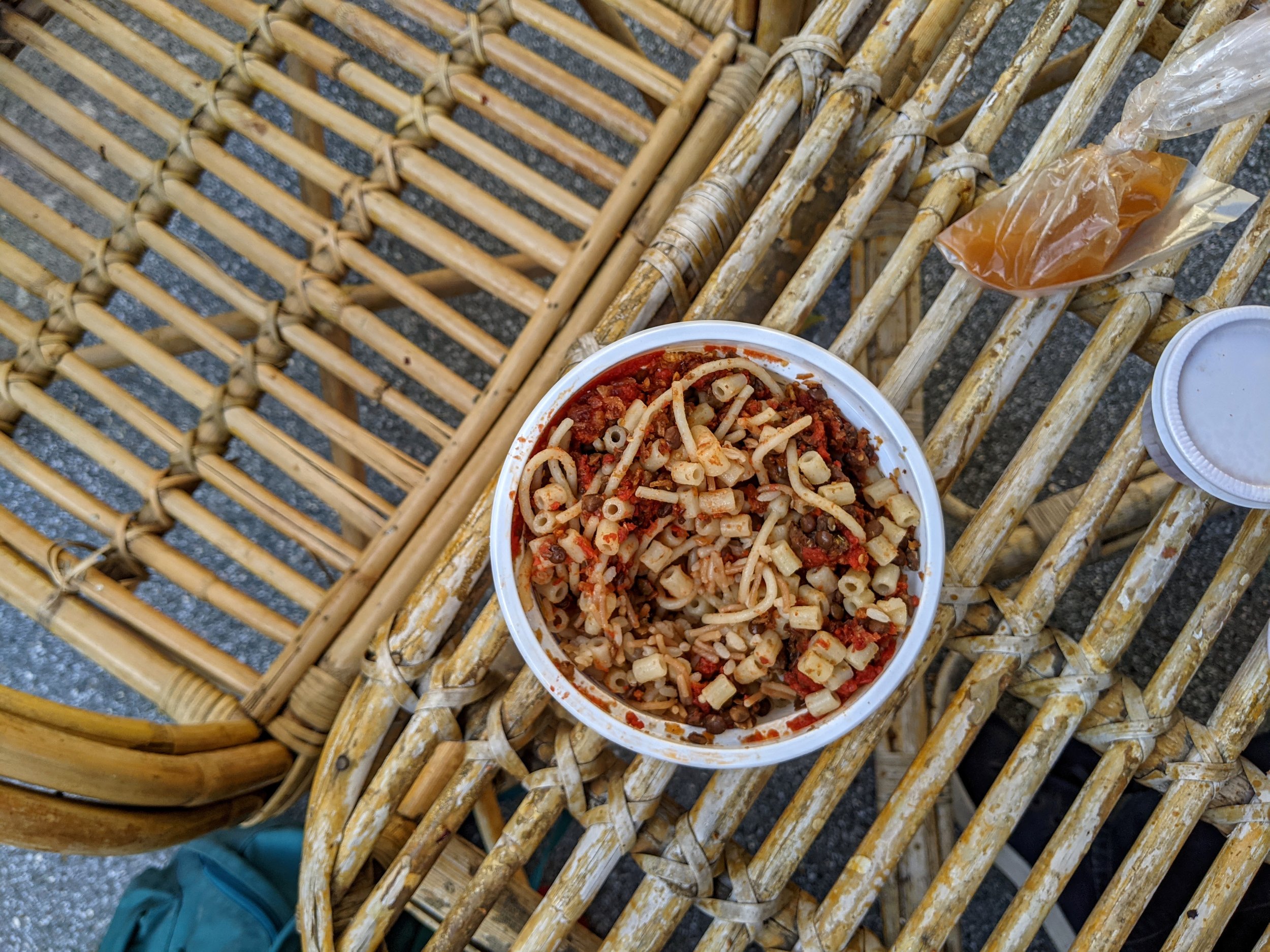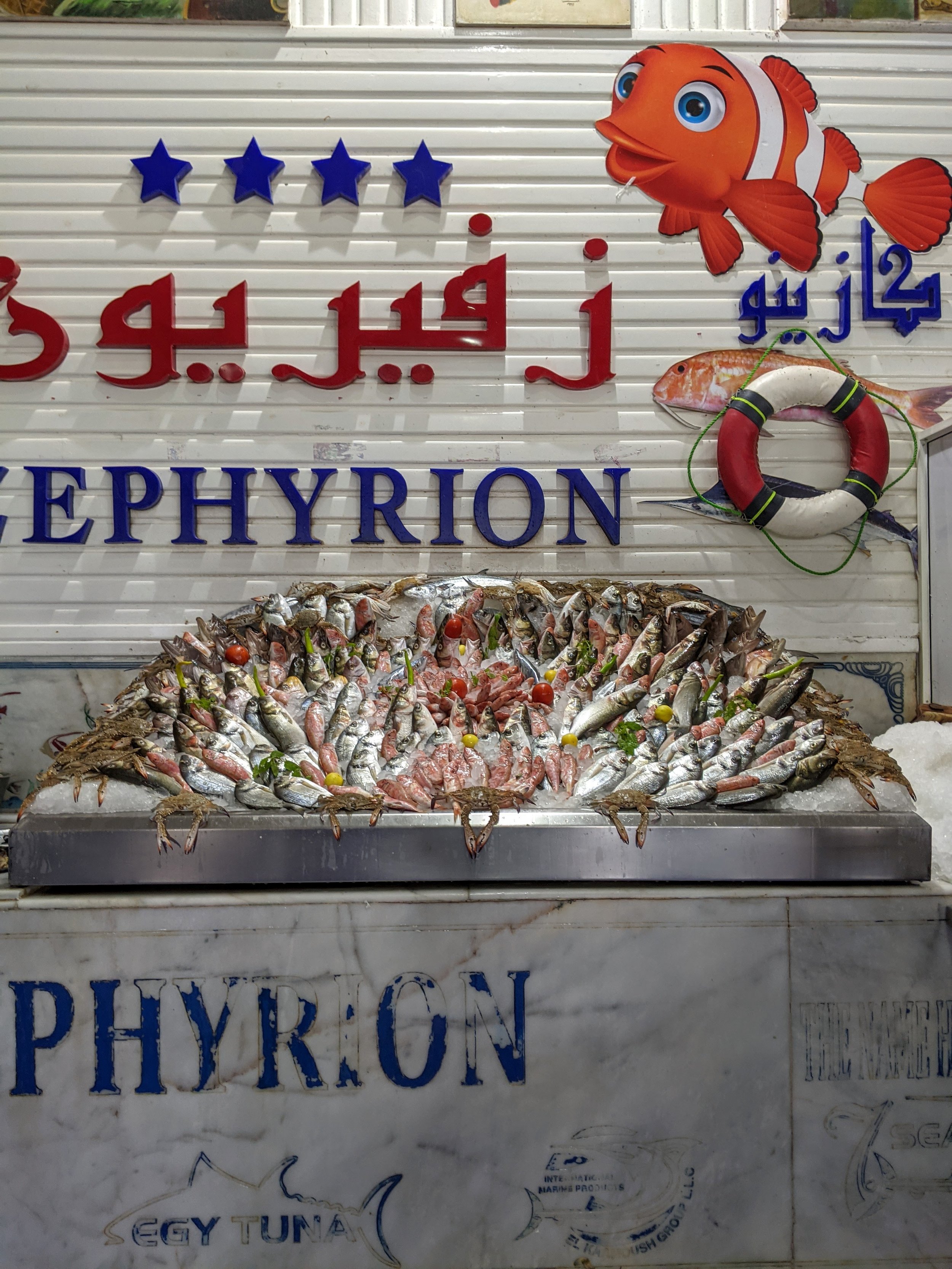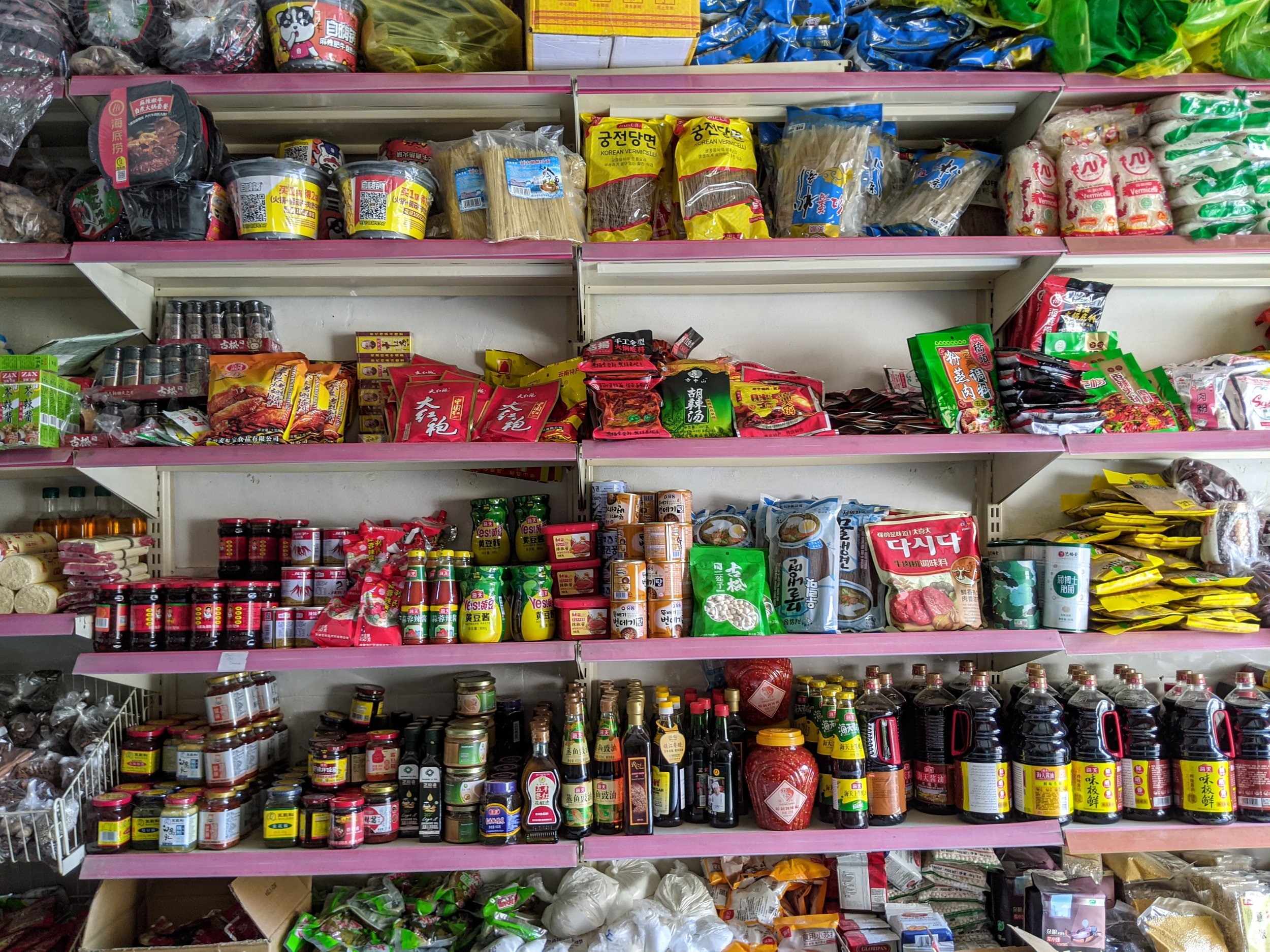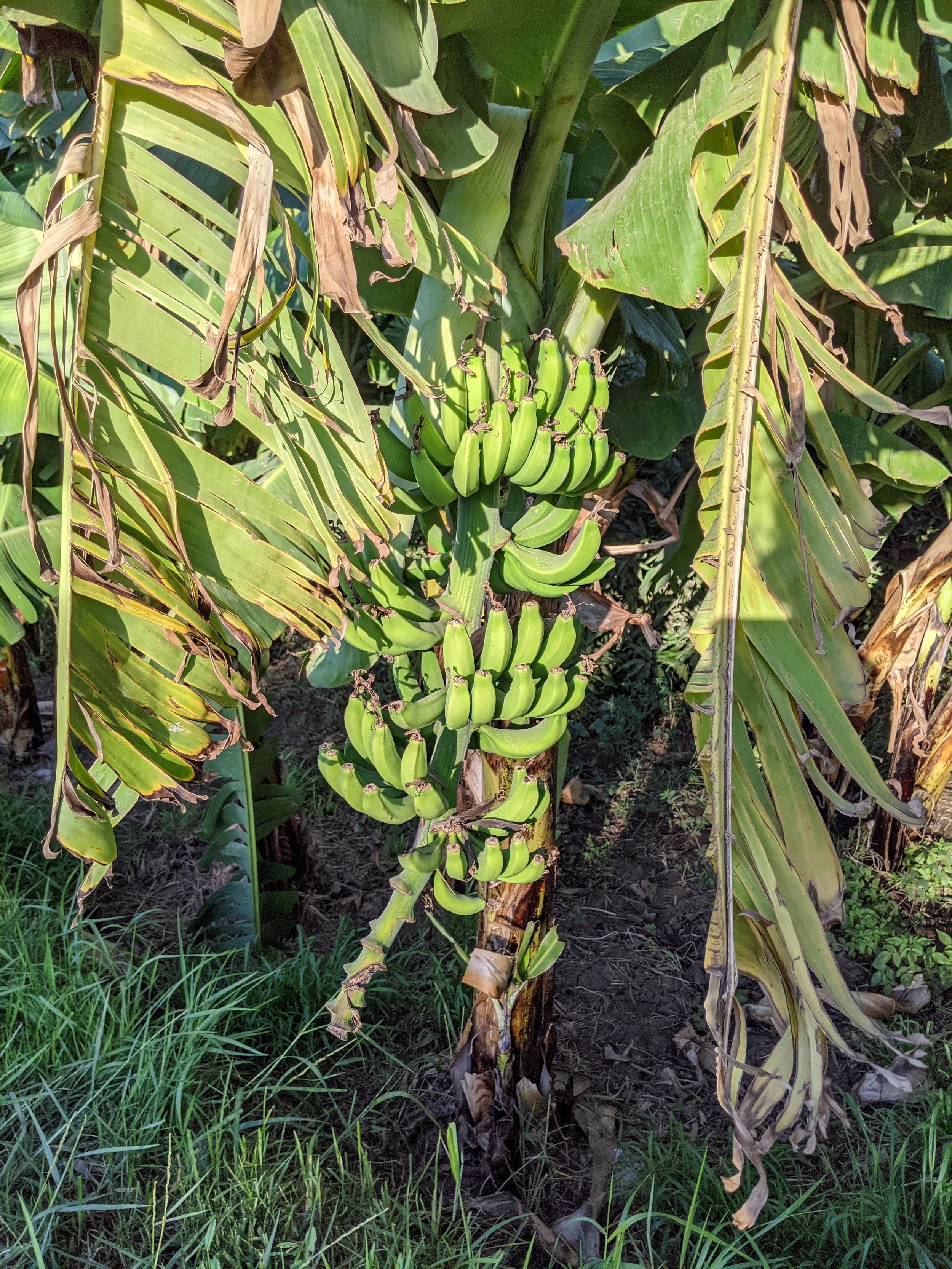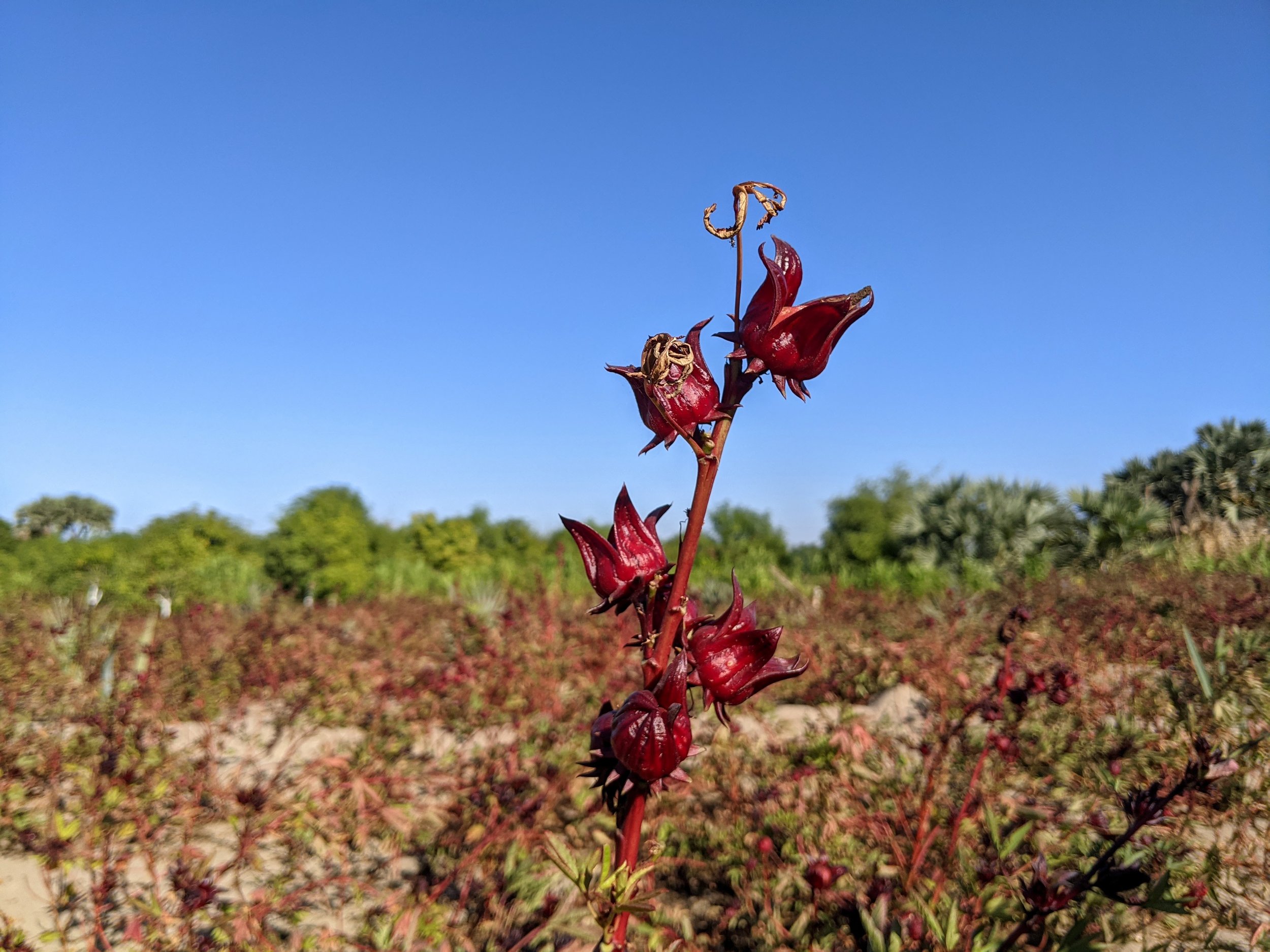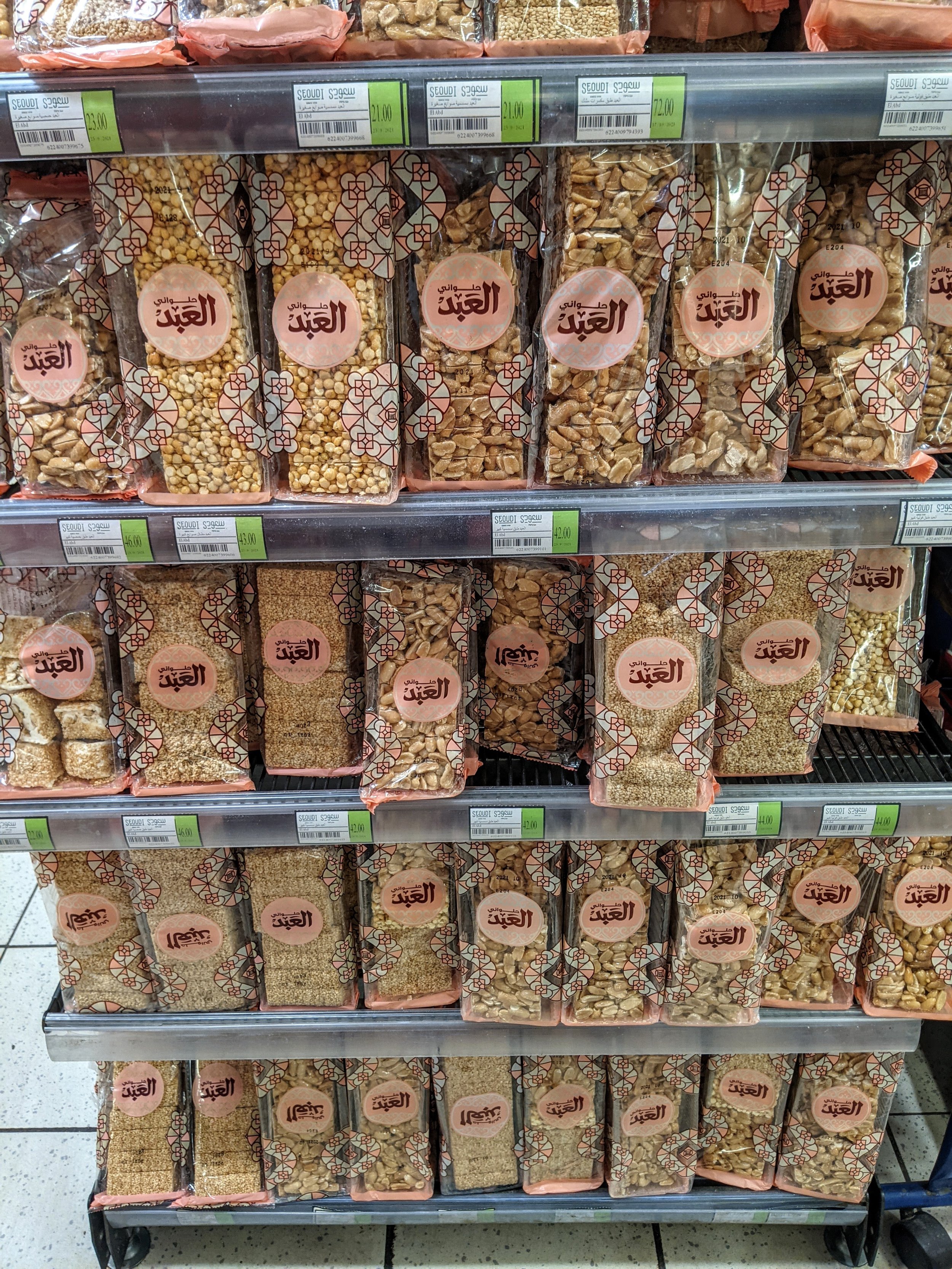eating in egypt
A hearty Egyptian breakfast of aish (bread), ful (mashed fava beans), eggs, and various spreads.
My dear friend,
When I told my mother that C. wasn’t looking forward to the stuffed pigeon he’d been told he would be served for Thanksgiving dinner on the Nile, she advised us to call it squab instead of pigeon.
“You’ll feel better,” she promised.
Whatever we called it, it was not what we expected. (I tried a bite. I may be a vegetarian, but I’m also a realist. Would I ever be offered a stuffed Thanksgiving pigeon on the Nile again?) The birds were larger than we imagined they would be. The rice filling was flavorful, but the pigeon itself was mostly scorched skin and tiny bones. After my “courtesy bite” (the phrase my parents used to induce me to try unfamiliar foods as a child), I set down my fork and returned to my zucchini and grape leaves and cabbage rolls, all of which had also been filled with rice.
Any meal, no matter how foreign, would be enjoyable in a setting like this one. As our dahabiya meandered slowly up the Nile, we drank hibiscus tea and ate cookies (some with ribbons of mashed dates; others tasting like an off-brand Oreo) and watched donkeys cantering through reedy grasses. Lunches and dinners were traditional Egyptian fare such as stewed beans, roasted chicken, cucumber or lentil salads, lemon-flavored soups, and fried fish. Every meal included the classic flatbread (the word for bread in Egypt, aish, is the same as the word for life), filtered water, juices, and a plate of grapes and guava for dessert.
For breakfast, we munched on cheeses, toast, omelettes, and spongey pancakes. I liked these best when I rolled them up with honey and a soft, creamy feta. We drank instant coffee and tea, and usually when we returned to the boat after visiting a temple, we were greeted with a whipped fruit drink of lemon and mint or guava and strawberry. I’ll be honest: it wasn’t a terrible life.
Of course, we don’t eat quite so extravagantly when we’re not on the Nile. Breakfasts at home are usually chocolate or peanut butter granola cereal (C.) and hearty toast with labneh and strawberry jam (me).
I often whip up a banana, yogurt, and frozen spinach smoothie with the portable blender my mother sent to Egypt with us. Since the blender is one of our few kitchen devices, we also use it to blend soups (eggplant and tomato) or grind hibiscus petals into powder (for hibiscus shortbread cookies). The motor is growing slower and louder, but I’m hopeful that it will survive until our departure in December.
Our apartment kitchen came equipped with a hot water maker, a small electric stove, a toaster, and a microwave. (The microwave stopped working and was whisked away by an electrician for repairs. We’ve been told it was fixed and returned, but it must have been returned somewhere else, as we haven’t seen a sign of it since.) Our pots and pans are perfectly adequate, though few in number. We don’t have a spatula, and although C. has been searching for one in every market we wander through, so far he’s still flipping the occasional pancake with a wooden spoon. There’s a hot water switch for the sink, but it’s difficult for us to reach and so we generally make do without it. I’m sure that it’s possible to purchase ice, but we haven’t found any yet. In order to make my cold lattes, I brew the espresso on the stovetop, dump it into a mug with honey, and then set the mug in the refrigerator to cool for fifteen minutes before filling it to the brim with my boxed milk.
I suppose we could do more to stock the kitchen, just as we could do more with the apartment itself. I’d like to buy some floor and table lamps, for instance, since we only have one—and even though it buzzes and flickers eerily when it’s plugged in, I still carry it around with me from room to room in order to create a homier, cozier atmosphere. We did purchase two plants, as I think I mentioned, but even that sparked something of a debate.
“We’re not staying here,” C. reminded me. “Why would we buy lamps and plants and pots and pans for an apartment we’re leaving so soon?”
He made a good point. And this, of course, is one of the most central questions of our life in this place: How settled do we want to feel here?
On our first evening in Egypt, we walked twenty minutes through our neighborhood to find a smoothie and a salad because I was craving something fresh after the flight. On the walk home, we stopped at the convenience store two buildings down from our apartment. There, we stumbled confusedly through the narrow aisles and wound up purchasing what we deemed to be essentials: milk, cereal, honey, pasta, bottled water, and frozen green beans. For that first week, while C. was on campus for orientation, I ate pasta and green beans for every meal because I wasn’t ready yet to venture out alone.
Our first real grocery store experience was equally overwhelming. Although it’s difficult to remember the details through the haze of jet lag, I remember standing for twenty minutes in front of the dairy case as we attempted to decipher the labels on a million containers of yogurt. We purchased cheese on that day, too—as well as a box of dates for C. and more peach juice for me. At the register, we handed over our bananas and didn’t understand the clerk’s efforts to explain that we were supposed to weigh them and tag them in the produce aisle. As we left, I observed a bakery case with what looked like croissants, but by that point I was too overwhelmed to figure out how to ask for one.
At the time, it felt like we would never understand the system—and yet somehow, this profoundly foreign experience has become a familiar routine. We bought a hand pump for a giant water bottle and learned the system for switching out an empty bottle for a full one.
Water bottles waiting to be delivered.
We learned how to order groceries for delivery and how much to tip when the deliverer arrived at our door. We studied the words for fruits and vegetables and numbers so that we could buy produce from one of the neighborhood stands.
We scoured the Internet for dishes that required one pan and four or five ingredients. We made giant batches of couscous, of baked chickpeas with feta, of white bean salad, of pasta with labneh and lemon and stored them in empty takeout containers. For a while, I got in the habit of chopping up fresh vegetables and carrying them around in empty honey jars. What a snack to enjoy on a felucca on the Nile!
Life definitely got easier once we understood and embraced the ubiquitous delivery culture in Cairo. Here, it’s not only grocery stores and restaurants that offer quick and inexpensive deliveries—it’s also coffee shops, like our beloved Beanos. The drinks come tightly sealed to avoid spillage, and often the pastries are still warm.
One of the most famous Egyptian street food meals is koshary, a carb-intense mixture of pasta, rice, lentils, chickpeas, and fried onions topped with tomato sauce. It comes with a plastic sandwich bag of a vinegary sauce and a little hot sauce. A medium-sized takeaway container will set you back about $2.
Other favorites include ful (mashed fava beans, which can come in either a cup or a sandwich), ta’meya (Egyptian falafel, often made with fava beans), mahshi (stuffed vegetables with rice), and—for the meat eaters— shawarma. Most meals are served with various mezze: small plates of roasted eggplant, or pickled vegetables, and definitely hummus or baba ganoush.
For dessert, we tend toward roz bil laban (rice pudding) and Umm Ali (bread pudding made with croissant-like dough). Since my baking has been constrained by my lack of measuring utensils, consistent oven temperature, and cookware, I’ve settled for making roz bil laban on the the stovetop every week or two. C. and I have also stocked the cabinets with packages of chocolate cookie sandwiches. Once in a while, we wander out to find a scoop of ice cream or a bite of a honey-soaked spun pastry called kunafa.
Sometimes, when we’re feeling overwhelmed by this city, we stay home and make quesadillas with cucumber tomato salad. When I am particularly drained, I revert back to macaroni and frozen green beans. But on days when we’re feeling bolder, we’ll page through a beautiful Mediterranean cookbook our friends sent us, or we’ll buy a paper plate of lunch items being sold from plastic containers by Egyptian grandmothers at a card table in the Aquarium Grotto Park, or we’ll drive up the coast from Alexandria to a restaurant where we pick out our soon-to-be-grilled fish from a heap of ice.
Are there times when find ourselves paying for this boldness a little while later? Of course. But Egyptian pharmacists are so accustomed to tourists’ fragile stomachs that, if they see us approaching the shop from the street, they usually have the correct box of pills waiting for us by the time we reach the counter. I’ve taken to carrying Antinal in my wallet and doling it out to the hardy souls who have come to visit us.
I like buying tofu and rice noodles at the Asian market. I like the bok choy waiting in crates just outside the entrance. I like ambling along the banks of the Nile and seeing bananas growing in trees, or admiring hibiscus flowers before they’re turned into juices and teas.
I like, too, the snacks that our Arabic tutor brings us: sesame-covered treats and ground chickpea candies to celebrate the Prophet’s birthday. We take turns removing our masks in between verb conjugations to sip our tea and take a bite or two. We’ve found them in the grocery store, too: end caps stocked with now-familiar treats that, until a few months ago, we’d never seen before.
On the days when we snack on mini Twix bars instead of sesame-chickpea candies, or when we cook up macaroni instead of mashing up some fava beans, I worry that we’re not being adventurous enough.
Then I remind myself that we did try Thanksgiving pigeon, and we do buy fresh juices from street vendors and homemade cabbage rolls from grandmothers. And when we were offered the choice to come to Egypt or stay at home, we chose to come to Egypt.
The Temple of Horus. Photo by Katie Barthelmes, friend & fellow explorer.
I hope that this choice will mean something. I hope that it will outweigh the frozen green beans. If the ancient jackal-headed god Anubis places my heart on the scale in the afterlife, I hope that he pronounces it brave and bold enough.
“She ate the pigeon!” I imagine him saying. “That has to count for something!”
Yours—
L.





